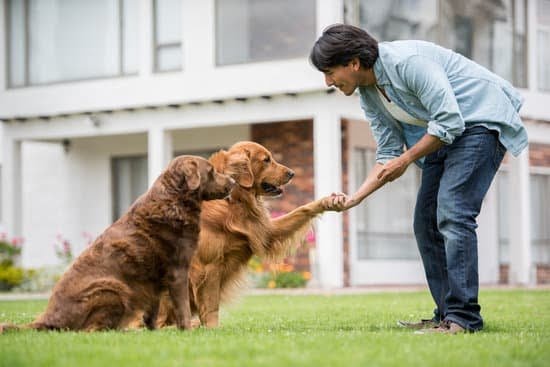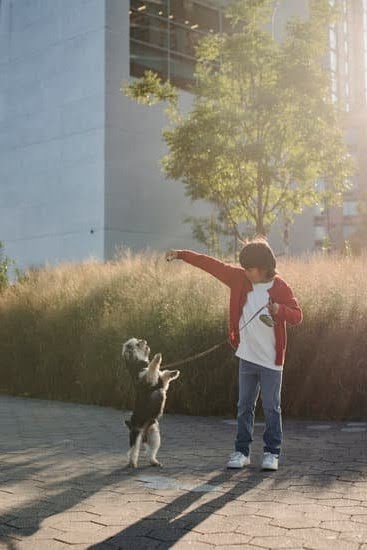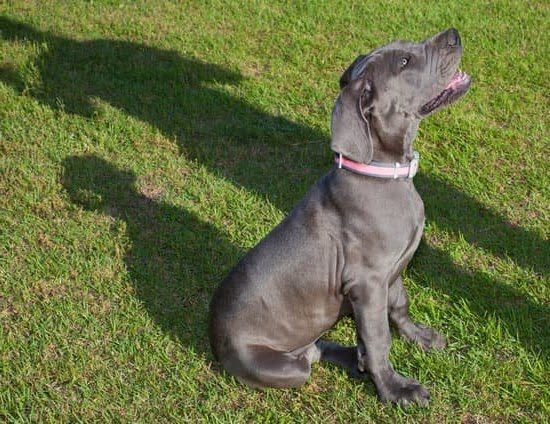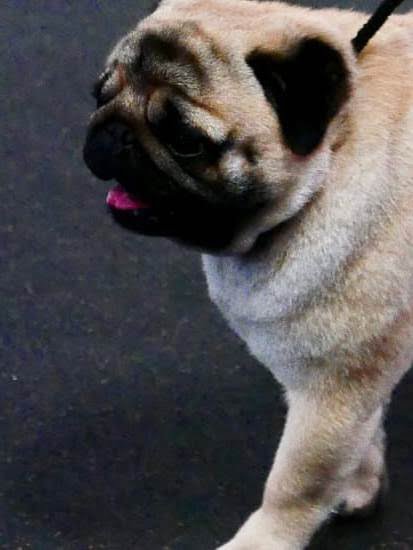Why Is My Dog Not Potty Trained
It is estimated that nearly half of all dog owners will experience some difficulty in potty training their pup. So, if you’re reading this, you’re certainly not alone. The good news is that there are many ways to successfully train your dog to pee and poop outside, and most of them are relatively easy. The first step is to determine why your dog is not potty trained. There are many possible reasons, but here are the most common:
1) The dog is not physically able to hold it in. This is often the case with puppies, who have not yet developed the ability to control their bladders.
2) The dog is not being housebroken because it is being given too much freedom. Dogs will not naturally know how to pee and poop outside if they are given the opportunity to do so inside.
3) The dog is not being housebroken because it is being punished for going potty in the wrong place. This can be a very common reason for dogs not being able to learn where to go.
4) The dog is not being housebroken because it is not getting enough exercise. A dog who isn’t getting enough exercise is more likely to soil your house out of boredom or frustration.
5) The dog is not being housebroken because it is not getting enough attention. Dogs who are ignored or left alone for long periods of time are often the ones who have the most trouble learning how to potty outside.
If you are experiencing difficulty potty training your dog, it is important to determine the root of the problem and address it accordingly. There are many helpful tips and tricks available online, as well as books and articles on the subject. But the best way to ensure success is to work closely with your veterinarian or a professional dog trainer.
How Do I Potty Train My Older Dog
Potty training an older dog can be a bit more challenging than potty training a younger dog, but it can be done. The most important thing to remember is to be patient and consistent.
First, you’ll need to establish a routine for your dog. Set times for feeding, walking, and potty breaks. Try to stick to the same routine each day.
When it’s time for a potty break, take your dog outside and wait until he or she does their business. Reward your dog with a treat or praise once they finish. If your dog doesn’t go potty within a few minutes, bring them back inside and try again later.
It may take a while for your dog to get the hang of things, but be patient and keep at it. With a little time and patience, you’ll have a potty-trained older dog in no time.
How To Crate Potty Train Your Dog
There is no one-size-fits-all answer to this question, as crate training your dog potty training will vary depending on your individual pet’s personality and needs. However, crate training is an extremely effective potty training method for most dogs, and can be a great way to help them learn to eliminate outdoors.
The basic idea behind crate training is to create a safe and comfortable place for your dog to relax in when you’re not able to supervise them. Dogs naturally don’t want to soil their sleeping area, so by placing them in a crate when you can’t watch them, you’re encouraging them to hold it until they can be taken outside.
One of the most important things to remember when crate training your dog is that you should never use the crate as a form of punishment. The crate should be seen as a happy and safe place for your dog to relax in, and should only be used for potty training purposes.
If your dog is hesitant to enter the crate, start by placing a few treats inside and gradually reduce the number of treats until your dog is comfortable entering without them. Once your dog is comfortable going into the crate, close the door for a few seconds at a time and gradually increase the amount of time the door is closed.
When it’s time to take your dog outside to potty, take them to the same spot each time and praise them when they eliminate outdoors. If your dog has an accident in the house, don’t scold them, as this will only discourage them from going potty in the future. Simply clean up the mess and continue to take your dog to the same spot outside each time.
Crate training your dog can be a great way to help them learn to eliminate outdoors, and can be a very effective potty training tool for most dogs. By following these simple tips, you can help your dog learn to love their crate and use it as a safe and comfortable place to relax in.
How To Potty Train A Dog That Won'
;t Poop In The House
There are a few different ways to potty train a dog that won’t poop in the house. One way is to use a crate. When the dog poops or pees in the crate, you will need to immediately take them outside to finish their business. If you catch them in the act of going to the bathroom in the house, you can say “No!” and take them outside. You will also need to praise them when they go outside. Another way to potty train a dog that won’t poop in the house is to put them on a schedule. Take them outside every hour, on the hour. Once they go potty outside, you will need to praise them. If you are not able to take them outside every hour, you can put them in a designated spot in the yard where you want them to go. When they go potty in that spot, you will need to praise them.
How Old To Potty Train Dogs
There is no one answer to this question as different dogs will reach the developmental milestone of being able to potty train at different ages, ranging anywhere from as young as 4 months to as old as 18 months. However, as a general guideline, puppies should be able to potty train by the time they are 6 months old.
There are a number of things you can do to help your puppy potty train successfully. First and foremost, provide your puppy with plenty of opportunities to go potty. Take them outside frequently, especially after meals and naps, and give them plenty of access to a designated potty spot in your yard. If your puppy seems to be having trouble holding it, you may also want to consider crate training, which can help to housebreak your puppy more quickly.
In addition to providing ample opportunity to go potty, it is also important to be consistent with your expectations and rewards. When your puppy does go potty in the appropriate spot, make sure to praise and reward them enthusiastically, and help them to understand that this is what you want them to do. If you catch your puppy having an accident indoors, do not punish them as this will only serve to confuse them. Instead, clean up the mess and put your puppy outside to go potty.
With patience and persistence, you can successfully potty train your puppy at any age. Just remember to be patient and consistent, and to provide your puppy with plenty of opportunity to go potty.

Welcome to the blog! I am a professional dog trainer and have been working with dogs for many years. In this blog, I will be discussing various topics related to dog training, including tips, tricks, and advice. I hope you find this information helpful and informative. Thanks for reading!





